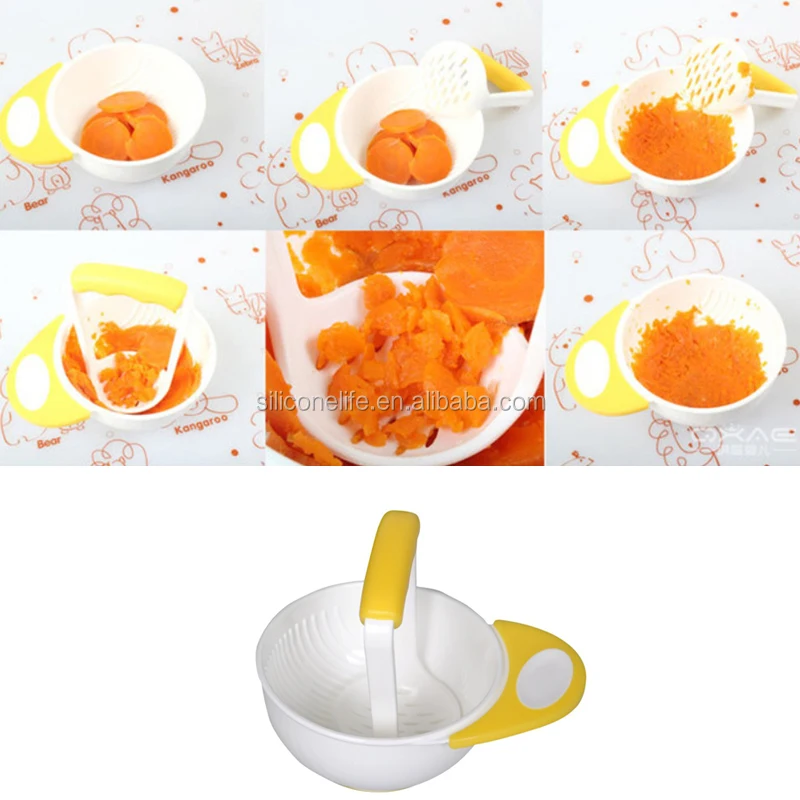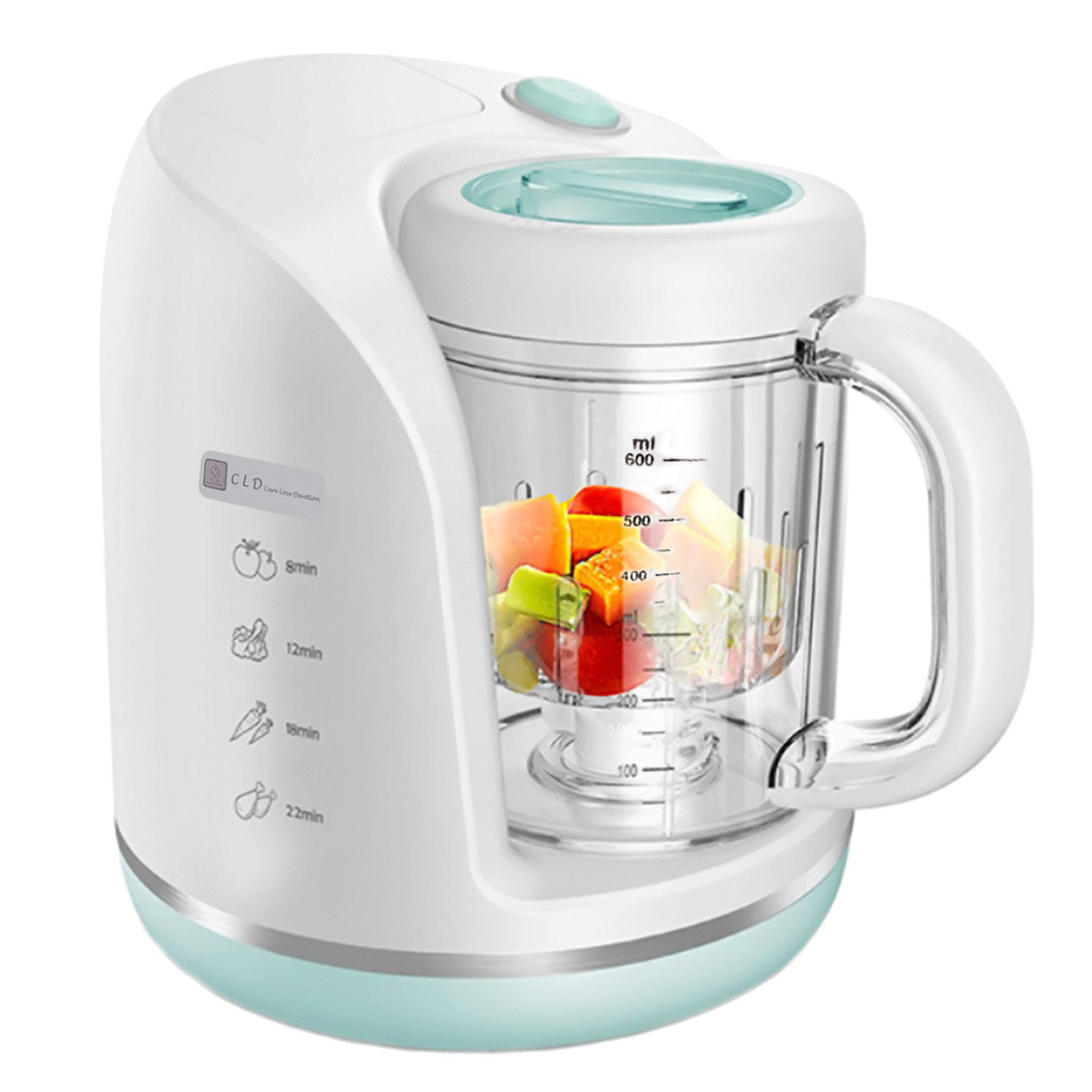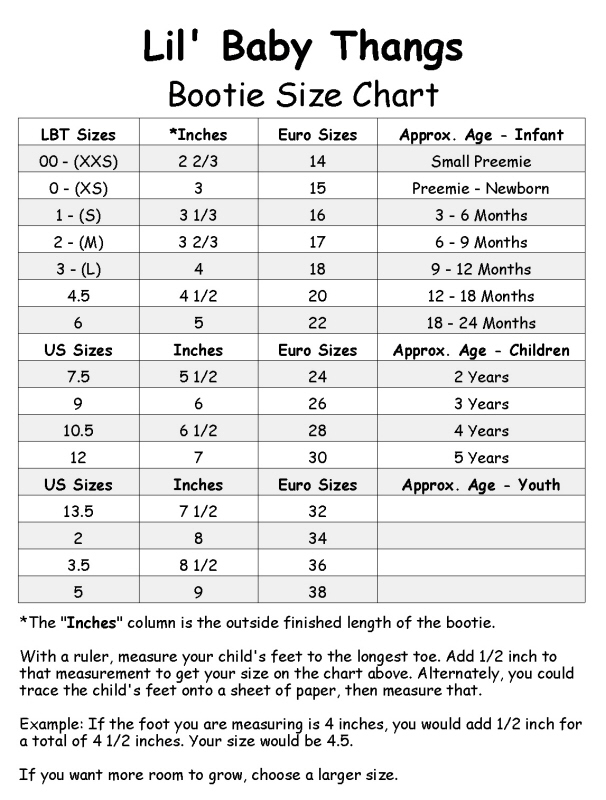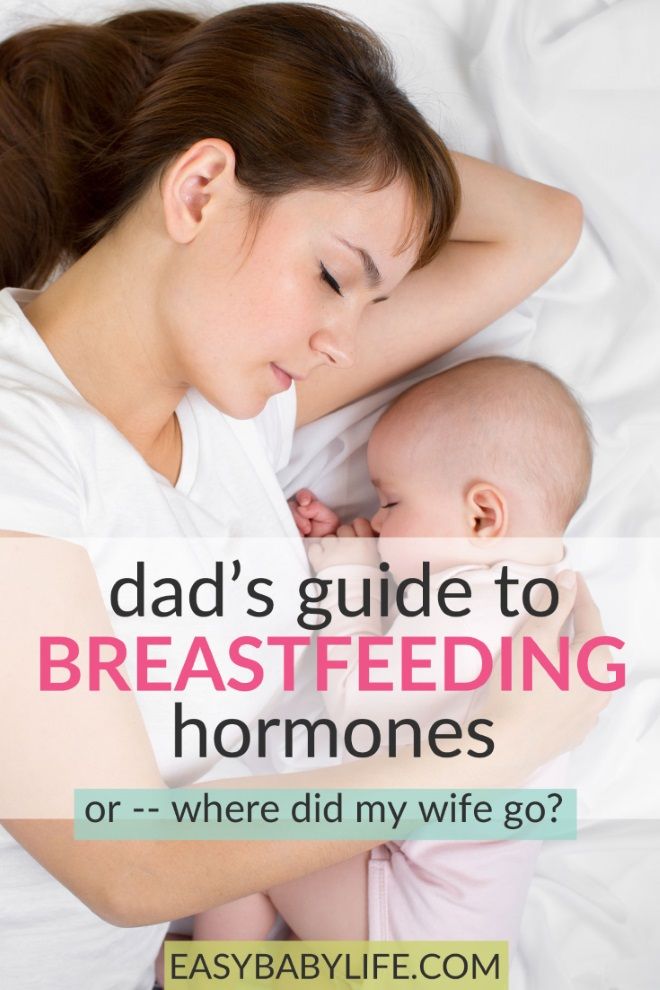Baby wilson feeding
First tastes - Rebecca Wilson
So, your baby ready to start weaning? How exciting!! ⠀⠀
Introducing your baby to solid food, should start when your baby is around 6 months old and showing all the signs of readiness. These include – ⠀⠀
– Baby can stay in a sitting position and hold their head steady. ⠀⠀
– Baby can co-ordinate their eyes, hands and mouth so they can look at food, and pick it up to their mouth. ⠀⠀
– Baby can swallow food (rather than spit it back out). ⠀⠀ ⠀
If your little one is chewing their fists, waking more in the night and wanting extra milk, these aren’t’t necessarily signs that baby is ready for solid food, but more perfectly normal behavioural traits in babies. ⠀⠀⠀⠀⠀⠀⠀⠀⠀⠀⠀⠀⠀
What food to start with?
From the beginning of weaning, start with only vegetables for a week or so, once a day. By starting with only vegetables, focusing on bitter green veg, this allows baby to get a head start with getting used to this contrast flavours. This in turn helps them to learn to love these flavours and avoid fussy tendencies as they grow older. Remember, it’s important to continue to serve these veggies on a regular basis once other foods are introduced.
What time of day?
When you start to wean, baby will only need a small amount of food in between their milk feeds. Choose a time in the day when they are well rested, not tired, too hungry or too full from their last milk feed, this will give them the best opportunity to be open to trying this new experience. Don’t worry if that time isn’t a “traditional”. Breakfast, lunch, or dinner time let your baby’s schedule guide you here, and you can adjust it as the weeks go by.
Finger food or puree –
From the beginning of weaning you have three choices, to serve solid food to baby puréed or very soft steamed veg served in finger strips. And you can also offer a mixture of both to get the best of both worlds. Serving finger foods allows little one to gain independence, develop their chewing skills, and the dexterity skills.![]() Whilst spoon feeding allows you to help your little one eat more food and is a more gradual route to eating solid food. However, if you do both, serving mashed carrot alongside a steamed carrot stick, allows baby to explore the same taste in a variety of textures, developing their skills further.
Whilst spoon feeding allows you to help your little one eat more food and is a more gradual route to eating solid food. However, if you do both, serving mashed carrot alongside a steamed carrot stick, allows baby to explore the same taste in a variety of textures, developing their skills further.
When serving finger foods in those first few weeks, you want the veg to mush easily between your thumb and forefinger. Then cut the food into a rough finger shape, using your forefinger a general guide, but no need to get the ruler out, just a rough estimation is fine. This is purely to assist your little one to hold the food easily. Find more information on how to serve food to baby here. (Link to how to serve page).
My top tips for weaning baby: ⠀⠀
• If possible, try to eat the same food with baby, modelling how you are eating so babe learns from you. ⠀⠀⠀
• Be patient and calm, go at baby’s pace. If they become distressed stop the meal and try again later or the next day. ⠀⠀
⠀⠀
• Allow baby to use their hands as much as possible, if spoon feeding, let baby hold a preloaded spoon. ⠀⠀
• Also, if possible, always feed baby in a highchair at the dining table, so when baby goes in this chair, they know it’s eating time. ⠀
Don’t worry about the quantity of food baby is eating, at these early stages, it’s all about exposing them to new tastes and textures, allowing baby to learn to chew and swallow. They’ll still be getting most of their nutrients from their breast or formula milk.
Next steps –
Once your little one has been trying veggies for a week or so, and you feel like they are ready to try something different, you can now introduce soft ripe fruit into the mix, along with all of the recipes which Rebecca creates, eating together as a family to help your little one develop this eating skill. Try to build baby’s meals in a balanced way, offering a little carbohydrate, protein, dairy, healthy fats and lots of fruit and veg.
How many meals?
As time goes by, your little one may start to show signs that they are ready to have more food in the day, so gradually increase the number of meals they are having. As a rough guide, 1 meal at 6 months, 2 meals at 7 months, and by the time baby is around 8-10 months they will probably be on 3 meals a day.
As your baby starts to eat more solid food, you may notice that their appetite for their breast or formula milk decreases during the day. It is very normal for a baby of around 7-9 months to want to drop their mid-morning or mid afternoon milk feed, and quite possibly by the time they are 1 year old they will just be having their morning, bedtime and any nighttime milk feeds. Let baby take the lead on this and reduce the milk as and when you feel baby is ready.
BREASTFEEDING FOR RAISING HEALTHY CHILDREN
BREASTFEEDING FOR RAISING HEALTHY CHILDREN
by Dr. Lawrence Wilson
October 2022,
L.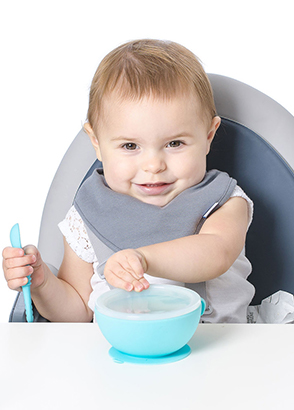 D. Wilson Consultants, Inc.
D. Wilson Consultants, Inc.
All information in this article is for educational purposes only. It is not for the diagnosis, treatment, prescription or cure of any disease or health condition.
SUMMARY
- Breastfeeding and avoiding all vaccines are among the most important tasks needed after birth to produce a healthy child.
- Breast milk is much healthier, provided the mother is following a development program. Otherwise, many babies will need adult food and may reject the milk after a time because its quality is so poor.
Just eating well or taking a few vitamins is not enough to produce good quality milk.
- Most doctors do not emphasize breast feeding nearly enough. Many advise mothers to stop breastfeeding when a baby reaches 6-12 months of age. This is horrible advice, in our view!
Breastfeeding should ideally
continue for about three years if the mother is well-nourished
and the baby wants the breast milk.
- If problems arise with breastfeeding, do not give up easily!
- This article also discusses various problems that occur with breastfeeding.
*****************
Breastfeeding and avoiding all vaccines are the most important actions needed after birth to produce a healthy child. Mothers milk is uniquely suited for the growth of a human child. No other milk or food is nearly as good if one wants ones child to be in the best of health throughout life.
WHY BREASTFEED?
Mothers milk is a rich source of many, many nutrients, antibodies and much more. Calcium and vitamin D in mothers milk, for example, create a strong and properly calcified skeleton and a properly functioning nervous system.
Amino acids build body proteins. Fatty acids, such as DHA, in particular, and many others as
well, create brain tissue and are needed for cell membranes and many other body
tissues as well. Other nutrients
in mothers milk include all the vitamins, minerals
and even some that are not yet catalogued by nutritionists and scientists.
Other nutrients
in mothers milk include all the vitamins, minerals
and even some that are not yet catalogued by nutritionists and scientists.
Mothers milk also is just the right temperature and a consistency that is not too watery, yet not too thick or difficult to eat. It is also generally free of harmful bacteria, viruses and other microorganisms that can be in tap water used to make formula. Many other reasons for breastfeeding exist, including the psychological benefits for both mother and child. It is a shame this is not understood well enough by many doctors and mothers.
MOTHERS MUST BE ON A DEVELOPMENT PROGRAM TO PRODUCE THE BEST MILK
We hear from clients repeatedly that for breast milk to be of good quality and to taste good, the mother needs to be on a complete development program. If she is not, problems can arise:
1. The milk does not
taste as good, and your baby may reject it after a number of months of
breastfeeding.
2. The milk is not nutritious enough, so the baby does not grow properly, or is very hungry all the time, and demands adult food sooner than is ideal.
The poor overall equality of breast milk today is one reason doctors suggest that breastfeeding be stopped after 6 to 12 months of life of the baby.
Colostrum. This is the first milk that comes when the baby is born. It is the finest milk in the sense that it contains special immunoglobins and other substances that help prepare the intestinal tract of the baby to receive all food items in the future.
Recall
that until a baby begins to feed, the intestinal tract is not in use, since all
nutrition and development depends on the blood that flows from the placenta to
the baby through its naval or bellybutton area. Thus the intestinal tract must be primed, so to speak, with
bacteria and other flora in order for it to work correctly.
For this reason, the horrible practice of starting a newborn on formula in the hospital if the mother cannot begin to breastfeed immediately is a totally insane practice that causes lots of illnesses in babies, mainly food-related allergies and others.
Every effort should be made to assist a baby to obtain colostrum immediately when he or she want to begin feeding. There is no reason to force this process, as the baby may require rest or sleep for hours after a difficult delivery, or any birth, for that matter.
Every
effort should also be made to assist the mother to start breast
feeding, since the colostrum is the finest product for the baby. If the mother cannot breastfeed and the
baby is calling for milk, another woman should be found to offer some milk,
preferably, before resorting to formula.
This may sound unclean, but it is far healthier in most cases than
formula of any kind and would result in far healthier babies.
In some nations, formula is given out to hospitals and birthing centers at no charge by companies that want to hook the babies on the taste of formula. Then they will never want to breastfeed. This supports the formula company, but does nothing beneficial for the child or the mother. The mother is left with engorged breasts and a colicky child in most instances. We can only hope that the practice of giving formula in the hospital to newborns will be abandoned sometime soon, though I doubt it as it is convenient and inexpensive.
HOW LONG SHOULD ONE BREASTFEED?
Breastfeeding should ideally continue for three years, and perhaps even longer if the baby wants it. The mother, however, must be well-nourished and ideally she should be following a development program.
This is different advice than
that given by almost all pediatricians and other doctors. However, most primitive cultures
breastfeed their children for about three years for optimum health.
However, most primitive cultures
breastfeed their children for about three years for optimum health.
The reason for this is the childs digestive system is extremely delicate. Although a child can start with adult food after a few months, the benefits of mothers milk are many, as explained above. It is also sufficient for nourishing most children for several years. There is no reason to introduce food, particularly meat and grains, until the child is at least one year old.
Some
children will ask for more than breast milk at a certain point, and some will
outright stop breastfeeding at a certain age. However, this is often because the mothers milk is not
sufficient in nutrients. This can
often be remedied by a change in the mothers diet or health status via a development
program. However, it is late to
begin such a program once one is breastfeeding. It is certainly possible, but it is preferable to begin a
healing program before one gets pregnant or during pregnancy.
Other reasons for continuing to breastfeed for several years are the bonding that occurs between mother and child and other subtle benefits for both mother and child.
I realize this may be inconvenient for modern-day mothers who may need to work. However, methods exist and are discussed below to allow the child to have the benefits of breast milk even if the mother cannot always be present.
PUMPING THE BREASTS
If you must be away from your child, important bonding with the child will not occur as well. However, breast milk can be pumped out and saved, using a breast pump. Refrigerate it if and only if it will be used more than an hour or two after it is pumped. It will have to be heated a little, or the child will usually vomit.
Also, if mother is very upset at feeding time, using a breast pump
may also be best. A baby is very
sensitive to the vibrations of the mother. If the mother cannot relax, pumping the milk and then
handing it the child in a cradle may actually be better than holding a baby in
an agitated state and believing the child can assimilate the milk
properly.
If the mother cannot relax, pumping the milk and then
handing it the child in a cradle may actually be better than holding a baby in
an agitated state and believing the child can assimilate the milk
properly.
Children must be relaxed to feed properly. Children, however, will often vomit if they are uncomfortable, whereas adults usually will just develop bloating, gas and other problems by eating when upset, anxious, in a hurry or not chewing or resting while eating.
WHAT IF A BABY WILL NOT BREASTFEED?
At times, for various reasons, a child will not feed at the breast. Let us examine some of the most common reasons and what can be done about it.
Problems in the baby.
Tongue-Tie. An important problem is
tongue-tie. It means the bottom of
the tongue is attached too much to the mouth. It interferes with suckling at the breast.
It should be checked at birth. It can be missed by doctors, but it definitely can cause breastfeeding problems. To read about it, read Tongue-Tie on this site.
Digestive problems. Some children are also born today with digestive defects or developmental delays that prevent normal feeding. The sucking reflex must be developed sufficiently, for example. Other are the inability to grip the breast or to signal when to eat and swallow in coordination.
At times, your patience will be rewarded in helping such as child to breast feed. Occasionally, the milk must be pumped out of the breast first so the child does not have to suck as hard, if this is the problem. Consult La Leche League before giving up on breast feeding.
Retracing. Beware - if a mother is following a development
program, the quality of the milk will improve and be excellent. As a result, some babies will go
through healing reactions while breastfeeding.
These can be misinterpreted by mothers and their doctors as problems cause by breastfeeding, when they are no such thing! Such reactions will pass in almost all cases without needing any medical intervention.
Problems in the mother. A second group of reasons has to do with the mother. More and more mothers are unable to breastfeed today. The cause is usually nutritional depletion. Mothers must literally eat for two while breastfeeding, although admittedly, the youngster does not consume anywhere near the amount the mother does in terms of calories or any other measure, simply because of his size.
However, nutritional difficulties leading to breastfeeding problems are rampant. The nipples may not function as needed. They may become very sore and not respond to standard treatments such as lubricating gels. One of the best products for sore or inflamed is called Bag Balm.
Mastitis or breast
infections are another common problem. These can be handled often with colloidal silver, applied topically as
well as taken by mouth. This is
much less toxic for the mother and child than using antibiotics.
These can be handled often with colloidal silver, applied topically as
well as taken by mouth. This is
much less toxic for the mother and child than using antibiotics.
The baby may throw up the milk or become colicky, the mother may become ill or depressed, and many other variations. Most of these causes can be dealt with at home by a suitable development program. This is discussed in other articles on this website.
Preparing for breastfeeding. In fact, pregnancy is such a stressful experience, and a thrilling one, that preparation should begin early. In fact, the earlier the better. Grade school would be a good time to begin to explain that childbearing is both a great honor as well as a burden and responsibility for women.
Do it well and you will feel wonderful. Create defective children and you will
feel so guilty that it destroys some mothers, as many know. Wise indigenous cultures that value
child-raising much more than we do start preparing girls for child birth very
young. Western cultures seem far
more interested in their daughters good looks, whom she marries and other
things that are important, but do not produce the best children.
Western cultures seem far
more interested in their daughters good looks, whom she marries and other
things that are important, but do not produce the best children.
If the culture cared about children a little more, young women would be prepared, starting in grade school, for the most important task of their lives – that of bearing the children for the future of the race. Instead, they are treated to junk food in the cafeterias and at home, late nights, insane pleasures and distractions such as movies, computer games and others, and a moral code that degrades women to a degree that is just sad to see.
The new moral code is called womens liberation but it is
nothing of the sort. It often
involves literally deadly birth control pills and patches, and exposes the
girls to sexually-transmitted diseases that affect
many for the rest of their lives.
This is not liberation, but a new form of tyranny and bondage.
Not enough milk. Some women do not produce enough milk for proper breastfeeding. A common cause for this is subtle dehydration. Milk is mostly water, so drinking enough spring water is very important for nursing mothers. Other types of water may not hydrate the body adequately. Rarely, one must switch the brand of spring water in order to hydrate the body properly.
Wet Nurses. If a child will not breastfeed and the cause is the mother, an ancient method to handle this situation is the use of a wet nurse. Any woman will do who has milk. Some women have too much milk and would welcome the opportunity to get rid of it. This will come about more as women learn more about their unique role as wet nurses and the great service it provides to themselves and society.
Now let us discuss what else can be done if breastfeeding is not to occur.
Milk
banks. If a mother cannot
breastfeed, and a wet nurse is not available, there exist in America and
elsewhere milk banks.
These are groups of women who are happy to express some of their breast milk
and send it to families who need it.
Milk banks, and how to get in touch with them, are described on the La
Leche League International website, LLLi.org.
If a mother cannot
breastfeed, and a wet nurse is not available, there exist in America and
elsewhere milk banks.
These are groups of women who are happy to express some of their breast milk
and send it to families who need it.
Milk banks, and how to get in touch with them, are described on the La
Leche League International website, LLLi.org.
OTHER TOPIC RELATED TO BREASTFEEDING
COWS MILK AND OTHER MILKS
Cows and other animals have been used for feeding babies for thousands of years. Today, this is still the case. Animal milks are good, but none come close to breast milk. Each of the others has its problems. A common problem to many, however, is hybridization.
For example, cows today are bred to provide five or six times as
much milk as those of 100 years ago.
While this increases production drastically, the quality is lower. The cow simply cannot eat enough grass,
hay or other food, unfortunately, to produce as good a milk
in such quantity. As a result,
except for organic milk, which is a little better, all animal milks are now suspect.
Pasteurizing and homogenizing makes them much worse.
The cow simply cannot eat enough grass,
hay or other food, unfortunately, to produce as good a milk
in such quantity. As a result,
except for organic milk, which is a little better, all animal milks are now suspect.
Pasteurizing and homogenizing makes them much worse.
Raw Milks. Until 50 years ago or so, most well-informed doctors recommended only certified raw milk for children. This is milk from cows that have been rigorously inspected for disease by government authorities and must meet very high standards of cleanliness.
This is a very safe product.
This excellent food is outlawed in most states for political
reasons. The dairy lobby wants
their contaminated milk to be sold as equal to certified raw milk, which it is
not. Their method of competing
with the raw milk producers was simply to outlaw their product, claiming it
causes illness when this is not so.
The standard milk is pasteurized to control its bacteria count, but this
damages the milk quite a lot. Let
us discuss this horrible practice
Let
us discuss this horrible practice
Pasteurization. This is the practice of heating milk, usually by splashing it over very hot rollers, for 10 minutes or more. While it may have had some value 100 years ago to prevent some disease, this harmful sterilization method unfortunately allows milk from sick cows to be sold on the open market. It also permits lax standards of cleanliness on a few huge dairy farms that supply large areas of America.
In addition, cooking the milk renders its calcium less biologically available to the body. It also damages the protein in the milk to a degree, making it much harder to digest.
Homogenization is another insult
to milk. Vigorous shaking breaks
up the fat particles so they stay in solution instead of rising to the
top. However, the small particles
are absorbed directly into the blood stream instead of being digested
properly. This renders the milk
much less healthful as well.
This renders the milk
much less healthful as well.
Goat, sheep or other milks. Goat milk is less damaged by pasteurization, for which reason it is preferable, though goats are also hybridized to a large degree, today, which renders the milk less ideal than previously.
Sheep milk is very good, but not very available. Other animals may be used as well, although none is as good as a wet nurse or the mother of the child.
Soy, rice and almond milks. These are not worthy of the name milk. Almond milk is a bit better, but not that much. These drinks, and that is what they are, should be reserved as a substitute for water. They do not contain nearly the nutrition needed for a growing child, even if they say fortified or enriched on the label.
The exception is if one makes them at home, with fresh
ingredients, and adds many more nutrients so that a truly soy-based or almond-based
baby formula is the result. Once
again, consult books on this subject for the details.
Once
again, consult books on this subject for the details.
FORMULA
Home made meat and milk-based formulas. If milk from a woman or a healthy animal is not available or does not work due to allergies or other reasons, a meat-based formula, properly prepared, is often by far the best substitute. It is far better than commercial formula, most nut or seed or grain milks and often very non-allergenic for the child. Two formula recipes are given in the book, Nourishing Traditions by Sally Fallon, New Trends Publishing, Washington, DC, 1999 and 2001. These are far better than commercial formula, but still falls short of breast milk, when available. The milk-based formula is probably best if a child will tolerate it. For simpler preparation of these formulas, and my comments, see the article on this site, entitled Baby Formula You Make At Home.
Commercial
Formula.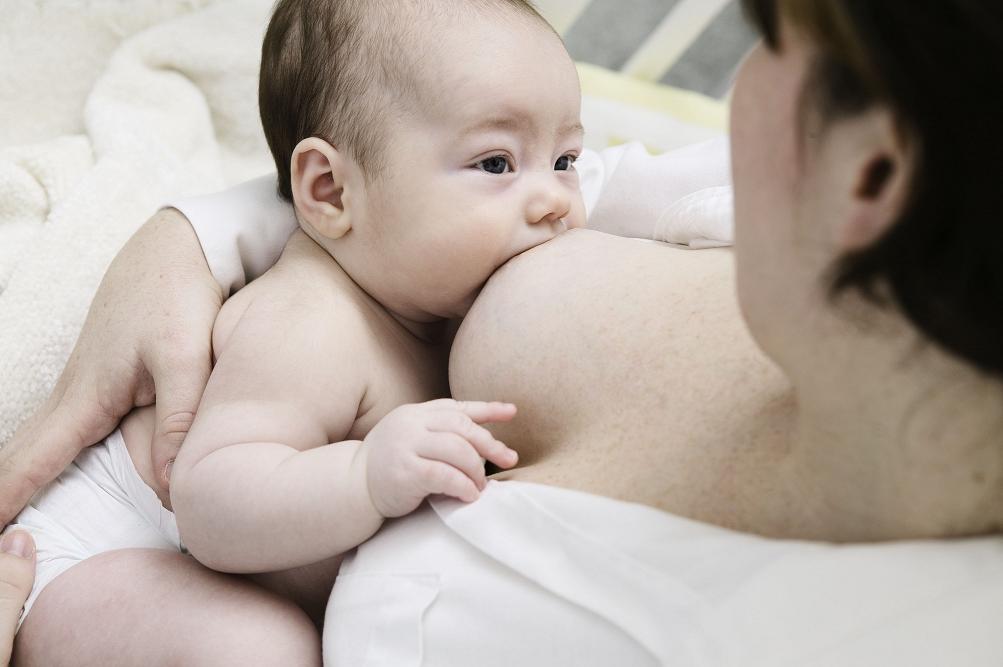 This is nothing but
a euphemism for poor quality, deficient milk. I expect it will be banned from use once medical scientists
discover the harm it produces.
Please do not give it to babies, or anyone else for that matter. Most brands are based on milk sugar
that has been altered by heat and chemicals. The manufacturers add synthetic
vitamins, and often many chemical additives as well.
This is nothing but
a euphemism for poor quality, deficient milk. I expect it will be banned from use once medical scientists
discover the harm it produces.
Please do not give it to babies, or anyone else for that matter. Most brands are based on milk sugar
that has been altered by heat and chemicals. The manufacturers add synthetic
vitamins, and often many chemical additives as well.
This is not a food, but a phony concoction that should be labeled as a drug, not a food. This is how harmful it is for the delicate, balanced chemistry of the young child – and adults as well.
It interferes with proper development, which is every childs
birthright. Thus it is one of the
worst products for growing children.
It is also used for the elderly in a slightly different form, such as
Ensure and other trademarked products.
This, too, is harmful.
However, at least in the elderly the person has lived his or her life,
so the damage is minimal by comparison.
SODA POP AND JUICES FOR BABIES
Never feed babies or children any fruit juices, lemonade, soda pop or sweetened beverages at all for optimum health. This merit a more detailed discussion because companies that produce juices and sodas, often target children and young mothers due to their convenience.
These are not food for children, however, or even most adults. Therapeutic use of carrot and green vegetable juices in limited quantities are one thing. Drinking sweet fruit or even sweet vegetable juices or worse, soda pop, is a horror for all people. The fact that sodas are still sold in schools, along with fruit juices, should make parents remove the children from this environment. However, this level of awareness is a long way off. Reasons to avoid all fruit juices and soda pop, sweet teas and other sweetened beverages are:
1) Very Little calcium. Soda pop and juices supply little if any calcium, even if
enriched. If calcium is added,
it is usually a cheap form of supplemental calcium. Orange juice has some calcium, but even this product is not
healthful for anyone, in our opinion, due to its high sugar content and other reasons
today. Citrus juices, such as
grapefruit, are better, but only if made with ripe fruit, which is rarely
available since the fruit is usually picked green. Even fresh grapefruit juice is extremely yin and should be
strictly limited, in my view, to a small glass once in a great while.
Soda pop and juices supply little if any calcium, even if
enriched. If calcium is added,
it is usually a cheap form of supplemental calcium. Orange juice has some calcium, but even this product is not
healthful for anyone, in our opinion, due to its high sugar content and other reasons
today. Citrus juices, such as
grapefruit, are better, but only if made with ripe fruit, which is rarely
available since the fruit is usually picked green. Even fresh grapefruit juice is extremely yin and should be
strictly limited, in my view, to a small glass once in a great while.
2)
Fruit acids or phosphoric acid.
Sodas, in particular, and orange juice, too, are quite acidic
foods. This means they contain
fruit acids or, in the case of sodas, phosphoric acid is added to the soda
pop. These are hard to digest, no
matter what the health authorities say.
Grapefruit is somewhat better because it has so little sugar. However, the fruit acids are not always
converted correctly and are often harmful to the body, especially in children.
However, the fruit acids are not always
converted correctly and are often harmful to the body, especially in children.
3) Calcium versus phosphoric acid and fruit acids. Phosphoric acid, used in most soda drinks to provide a kick, binds and absorbs calcium in the intestinal tract. When it binds to calcium, it forms low-solubility calcium phosphates. This prevents the bound calcium from being absorbed properly into the childs body.
It is silly to believe you will get much calcium from a food or beverage that has phosphoric acid added for fizz or some other reason.
Fruit acids, which include phosphoric, malic and others, can also do the same thing. This is one reason that people who consume a lot of fruit have decayed teeth. It is not just the surface effects of fruit acids on the dentine of the teeth. It is also the absorption and binding of calcium by fruit acids, rendering them less absorbable
This is not to be confused with the fact that absorption of
calcium requires an acid medium in the stomach. This is the truth.
However, the proper acid is hydrochloric acid. This enables calcium, if it is unbound, to be mixed with
amino acids and thereby chelated.
This word means to be bound to a mineral transporter, such as the amino
acid glutamate or others. This, in
fact, permits greater calcium absorption.
This is the truth.
However, the proper acid is hydrochloric acid. This enables calcium, if it is unbound, to be mixed with
amino acids and thereby chelated.
This word means to be bound to a mineral transporter, such as the amino
acid glutamate or others. This, in
fact, permits greater calcium absorption.
However, binding calcium with other materials, such as phosphorus, creates insoluble compounds that are poorly absorbed. This is why one should not buy a calcium phosphate product in the health store. This will not be as well absorbed as a calcium chelate product in most cases.
Phosphoric acid and fruit acids may also bind other minerals such as magnesium and zinc.
4)
Sugars to saturation. The many problems of consuming sugar, especially for children,
are discussed in other articles.
Simple carbohydrates are a very damaging food for children, unless
combined as in natural milks, especially mothers milk.
They upset calcium metabolism more than any other single factor in many instances. Melvin Page, DDS wrote extensively about this in his book, Degeneration, Regeneration, Nutritional Development, FL, 1949,1980. and in his other books. Many other excellent books about sugar have also been published.
5) Too much liquid. This is another problem with feeding babies sodas, soymilk, juices and other dilute beverages. The nutrient density of these beverages is so low the baby must drink too much liquid to get any nutrition at all. This causes stomach upsets and more problems. It is a subtle problem with formula and all substitutes for mothers milk, in most cases.
6) Low
in essential fatty acids. One of the great benefits of most mothers
milk is the fatty acid content.
This is absolutely essential for childhood development of the nervous
system.
One contributor to conditions such as attention deficit-hyperactivity disorder (ADHD) and many other developmental delays and learning problems stem from inadequate or the improper balance of fatty acids in the body.
It is not easy to obtain the needed ones from modern food. Also, children fed exclusively formula are all deficient in fatty acids and other nutrients, some of which have not been discovered and will not be so for some years. This applies even when vitamins and other nutrients are added to the milk formula.
The body needs a wide range of fatty acids for its development. Fish oils can supply most of these. Todays food is deficient in many of them, however, some of which are known and many are not known.
7)
Unknown Needs. A hidden reason for using breast milk is that we have not
discovered all the nutrients needed for life. In particular, more amino acids are needed than are
recognized. An example is
L-taurine. This very essential
nutrient is missing from many commercial formulas and not too abundant in many
nut and seed milks.
An example is
L-taurine. This very essential
nutrient is missing from many commercial formulas and not too abundant in many
nut and seed milks.
8) Caffeine And Many Chemicals. These are common in almost all beverages except simple herb teas, which may be given to children in small quantities. Otherwise, however, one is feeding the child a chemical cocktail and that is pretty much all they are.
Sugar substitutes, especially aspartame (Equal or Nutrasweet) are even worse than sugars for many children. The other fake sweeteners are less harmful, but not too much better in most cases. They upset the delicate taste detection mechanism in children, leading to obesity, cravings, addictions and other problems of metabolism, as well as psychological problems in a few cases.
9) Tap
water toxins. Some forget that tap
water is not a healthful product, with its added chlorides, fluorides, aluminum
(used in most every municipal water system), copper in some areas, and much
more.
For example, most urban water supplies have some degree of contamination with medical drugs. Your baby gets a dose of antibiotics, sleeping pills and much, much more with each bottle of formula mixed with tap water. No wonder so many are sick.
10) Radiation and even more toxins. Breast milk is also purer in terms of bacteria, parasites, viruses and other harmful microorganisms. Babies are also exposed to radiation poisoning through the municipal water used in many nations. Only a foolish mother would dilute formula with this kind of water, but for many mothers this is one of the only alternatives to breastfeeding, and it is an important profit center for the food companies.
If you care about your child, breast feed,
use a wet nurse or only add distilled or spring water, if possible, to any
formula. Carbon filtered water is
also okay, though not as good as it does not remove toxic metals, another
common problem with American and foreign tap waters. Boiling water does remove chlorine and kills some germs, but
does not remove all chemicals or any of the toxic metals.
Boiling water does remove chlorine and kills some germs, but
does not remove all chemicals or any of the toxic metals.
CONCLUDING REMARKS
If possible, breastfeed your child for at least three years. If problems arise, do not give up easily, even if your doctor tells you to forget breastfeeding.
Home | Hair Analysis | Saunas | Books | Articles | Detox Protocols
Courses | Contact Us | The Free Basic Program
How to understand that it's time to feed the baby, milk is digested by breastfeeding
Sue Iwinski
Prospect CT USA
Gwen Gotsch
Oak Park IL USA
From: NEW BEGINNINGS, Vol. 20 no. 4, July-August 2003, p. 126
Translation by Irina Slukina
Editorial staff of the translation by Natalia Gerbeda-Wilson
Proofreaders Dina Sabitova and Aliya Vasilchenko
The feeding regimen, just like the kissing regimen, will make life difficult for both you and the baby.
“Women's Art. Breastfeeding.” (2010)
“How often should I feed my baby?” Almost all young parents puzzle over this question in the first days of a baby's life. They have not yet learned to distinguish the nuances of his behavior and doubt their ability to care for him. Depending on who they turn to for advice or what book they look for information in, new moms and dads get different answers to this seemingly simple question.
Some sources advise feeding at fixed hours, such as saying that children should eat every four hours. Feeding by the hour promises parents predictability. They feel confident because they are following recommendations from trusted sources. “We don’t have much experience with children and it’s important for us to do everything right,” one father explained the reason why his wife was breastfeeding a child on a schedule.
Other books recommend "feeding on demand", "feeding on demand", or "feeding in response to signs of readiness to suckle". (editor's note. Feeding on demand - why so many terms?) Supporters of feeding on demand believe that a child should be fed when he is hungry. This means that the mother must learn to recognize the special behavior of the baby when he wants to suckle. The child, as it were, sends signals to the mother that he already wants to suckle the breast - the baby’s eyelids tremble in a dream, you can notice the rapid movement of the eyeballs under the eyelids, then the baby begins to toss and turn, fidget, he looks for the breast, starts to squeak, and if he is not fed starts crying loudly. For some, recognizing signs of readiness to suckle is easier, for some it is more difficult. This ability depends on previous experience with children, self-confidence and how clearly the child can show by his behavior that he wants to suckle, and how vividly he responds to the actions of the mother. Some parents will need from several days to several weeks before they learn to understand the behavior and needs of their child.
(editor's note. Feeding on demand - why so many terms?) Supporters of feeding on demand believe that a child should be fed when he is hungry. This means that the mother must learn to recognize the special behavior of the baby when he wants to suckle. The child, as it were, sends signals to the mother that he already wants to suckle the breast - the baby’s eyelids tremble in a dream, you can notice the rapid movement of the eyeballs under the eyelids, then the baby begins to toss and turn, fidget, he looks for the breast, starts to squeak, and if he is not fed starts crying loudly. For some, recognizing signs of readiness to suckle is easier, for some it is more difficult. This ability depends on previous experience with children, self-confidence and how clearly the child can show by his behavior that he wants to suckle, and how vividly he responds to the actions of the mother. Some parents will need from several days to several weeks before they learn to understand the behavior and needs of their child.
Which approach to feeding is best? Which approach is best for breastfeeding? Why do parents choose one way or the other? Parents' actions depend on culture, individual preferences and values. If you break away from the influence of culture and look at the process of breastfeeding, the biology of a woman and a child, it turns out that abstract feeding very often does not work: children cry, women are nervous, and milk runs out.
Biological facts
In industrial cultures, adults often have no idea how children actually behave, although everyone has illusory ideas about how children should behave. Adults do not realize that a child comes into this world with the same biological needs for food, protection, affection and attention as children thousands of years ago, throughout human history. Humanity has survived and thrived because mothers have met the needs of their children, responding to their signals and behaviors, in particular, signs of readiness to suckle.
Breastfeeding is the norm for mother and child. It has been scientifically proven that bottle feeding will not replace the emotional and physiological process of breastfeeding, and no artificial formula will replace the nutrients and immune factors in breast milk that protect the baby from disease. Scientific studies of successful breastfeeding have shown that, from the point of view of biology, both mothers and children are suitable for feeding not according to the regimen, but taking into account the behavior of the child.
The capacity of a baby's stomach is small and breast milk is digested quickly. By themselves, these two physiological facts confirm that the newborn will be calmer if he suckles frequently, and not only every three or four hours according to the regimen. In the first two or three days after birth, the mother produces a small amount of colostrum, an easily digestible, protein-rich fluid that contains immune bodies and prepares the baby's digestive system for more food. Another biological fact has appeared in our body of evidence, which confirms that newborns need to suckle often and suck out small portions of milk. And, of course, it is not at all accidental that frequent attachments to the breast guarantee the baby enough affection, the feeling that he has not been abandoned, i.e. a sense of security, tactile contact and communication with mom.
Another biological fact has appeared in our body of evidence, which confirms that newborns need to suckle often and suck out small portions of milk. And, of course, it is not at all accidental that frequent attachments to the breast guarantee the baby enough affection, the feeling that he has not been abandoned, i.e. a sense of security, tactile contact and communication with mom.
But that's not all. Frequent feedings in the first days of life help the newborn learn to suck on relatively soft breasts, so that later, when there is more milk, the baby can confidently take the breast. For a mother, frequent feeding in the first days after childbirth means a sufficient and stable amount of milk in the following months. And importantly, women who hold babies for long periods of time quickly learn to recognize what their babies need.
Studies have shown that healthy full-term infants regulate their milk intake remarkably if they are breastfed when mothers recognize behaviors that indicate a desire to breastfeed. The amount of milk the mother has in such cases exactly matches the needs of the baby. Regardless of the size of the mother's breasts and the weight of the child, a mother who feeds her child in proportion to his appetite has exactly as much milk as the baby needs. Babies suck when they are hungry, then suck more slowly until they stop sucking when they are full. Some babies suckle little and often, others suck longer and less often. In both cases, you can be sure that a healthy baby will regulate how much milk he sucks, and, therefore, adjust the mother's milk production so that he always has enough.
The amount of milk the mother has in such cases exactly matches the needs of the baby. Regardless of the size of the mother's breasts and the weight of the child, a mother who feeds her child in proportion to his appetite has exactly as much milk as the baby needs. Babies suck when they are hungry, then suck more slowly until they stop sucking when they are full. Some babies suckle little and often, others suck longer and less often. In both cases, you can be sure that a healthy baby will regulate how much milk he sucks, and, therefore, adjust the mother's milk production so that he always has enough.
Recently, a group of Australian scientists conducted research that clearly showed the relationship between the appetite of the child and the amount of milk in the mother. Very often this relationship is described as a supply-demand system. According to these studies, milk is produced in the breast more slowly or faster, depending on how full or empty it is. Full breasts produce milk more slowly, empty breasts faster. This means that when the baby has emptied the breast as much as possible, milk is produced most quickly. If the baby does not suck out all the milk from the breast, there will be less milk. The baby's appetite controls the mother's milk supply. Therefore, if the baby is always breastfed when it wants to suckle, the baby will regulate its own milk production. If the baby is hungry and empties the breast, milk will be produced faster. If the child is full and does not eat for several hours, slow down.
This means that when the baby has emptied the breast as much as possible, milk is produced most quickly. If the baby does not suck out all the milk from the breast, there will be less milk. The baby's appetite controls the mother's milk supply. Therefore, if the baby is always breastfed when it wants to suckle, the baby will regulate its own milk production. If the baby is hungry and empties the breast, milk will be produced faster. If the child is full and does not eat for several hours, slow down.
It follows that the question "How often should I feed my baby?" there can be no single answer. Feeding on a strict schedule will disrupt the complex interaction between an infant's suckling and feeding needs and the mother's ability to produce enough milk. For example, if a baby wants to suckle, but he is not given a breast, because the time for feeding has not yet come up according to the regimen, the breast overflows, and milk production slows down. If this happens from time to time, the amount of milk the mother has will not meet the needs of the child. Some proponents of the regimen approach believe that one must wait until the breast is "full" before feeding the baby, and that the baby will not be full if he suckles on a relatively empty breast. However, studies on the rate of milk production leave no doubt that in response to the suckling of a child in an empty breast, milk is produced faster and that such milk is high in fat.
Some proponents of the regimen approach believe that one must wait until the breast is "full" before feeding the baby, and that the baby will not be full if he suckles on a relatively empty breast. However, studies on the rate of milk production leave no doubt that in response to the suckling of a child in an empty breast, milk is produced faster and that such milk is high in fat.
Changes in the fat content of breast milk is another important factor that influences the relationship between a baby's feeling of fullness, the amount of milk the baby sucks, and the amount of milk the mother produces. The amount of fat in breast milk increases as the breasts are emptied. A not-so-hungry baby sucks out a small amount of low-fat milk. A hungry baby sucks out more milk with a high fat content, and the longer he sucks, the fatter the milk. Higher fat milk gives the baby a feeling of satiety at the end of feeding. If an infant is allowed to suck on one breast for only a few minutes and then the breast is voluntarily changed, he suckles only a full breast in both cases, which means that he fills his stomach with a lot of low-fat milk and does not receive the “cream” that would make him feel full and satisfied.
American editor's note. Please note that this article is about healthy babies who suckle and empty their breasts well, suck out enough milk and gain weight well. Babies who suckle poorly and do not empty their breasts may not always be able to set the pace of milk production and suck out enough milk for growth and development. If the newborn sleeps too much, he should be awakened and breastfed more often.
Scientists have also determined that the fat content of mother's milk decreases if the time between feedings increases. In other words, the more frequent feedings, the higher the fat content of milk. An infant who is breastfed 30 to 40 minutes after he has emptied his breast will suck out more fatty milk than if he were breastfed two to three hours before.
American editor's note. Do not rush to come up with new rules for breastfeeding based on this article. No need to think about which breasts are full and which are empty, how much milk is in the breast or how much fat is in the milk. Look at the baby, give him the breast when he shows his behavior that he wants to suckle, and everything will be all right.
Look at the baby, give him the breast when he shows his behavior that he wants to suckle, and everything will be all right.
Babies change their personal "mode" of suckling depending on various circumstances: whether they are hungry, or they are hot and thirsty, or they are upset about something and need to be pitied. There are times when babies grow very fastmonths), which means they suckle very often and thus increase the amount of mother's milk to meet the increasing needs for further growth (there was enough milk and even more!). When children eat more and more adult food, complementary foods, they breastfeed less often, and there is less milk. A well-oiled system works great because of natural behavior: the mother adapts to the child, and the child adapts to the mother. A strict feeding regime breaks this harmonious system. Nature has made it so that babies decide when to breastfeed.
Cultural reasons
Understanding a child's behavior requires effort and time to acquire new skills. It's much easier to look at your watch or listen to an "authoritative opinion" about when and how often to feed your baby. If parents aren't sure they can figure out when a baby is "telling" them that it's time to breastfeed, they may find it easier to feed on a schedule. Some parents believe that feeding according to the regimen is good for the child - they themselves live according to a clear schedule and rely on the children's regimen to guarantee them the stable and predictable life they are so used to. There is also an opinion that the regime imposed by parents will help raise an obedient child.
It's much easier to look at your watch or listen to an "authoritative opinion" about when and how often to feed your baby. If parents aren't sure they can figure out when a baby is "telling" them that it's time to breastfeed, they may find it easier to feed on a schedule. Some parents believe that feeding according to the regimen is good for the child - they themselves live according to a clear schedule and rely on the children's regimen to guarantee them the stable and predictable life they are so used to. There is also an opinion that the regime imposed by parents will help raise an obedient child.
Young parents often rely on the opinions of other people (grandmothers, doctors, “authoritative books”, friends) about how to properly care for a child. When an authoritative person in the eyes of a mother claims that if the feeding regimen is followed, the baby will sleep better and sleep longer and that she will “accumulate” milk for feeding, the woman is most likely to try to feed by the hour. .
.
However, the reasons why parents Deciding to feed according to a schedule may go deeper than just personal preference. If the culture of parents is in control of children's behavior, parents are more likely to feed at fixed hours. If it is not customary in society to pay attention to the needs of the child, parents will be condemned if they respond to every change in the behavior of the child ... If it is customary to feed children with breast milk substitutes from a bottle, then the behavior characteristic of formula-fed babies (in particular, prolonged intervals between feedings) may become the norm, and parents of an infant will try to extend the time between feedings and avoid frequent attachment to the breast. Young parents are more likely to conform to cultural dictates than to listen to their own parental instinct.
Difficulties of feeding by the hour
Feeding infants according to a strict schedule and limiting the duration of suckling often does not go unnoticed either for parents or for the child. Most babies cry and demand to eat “too fast” and off schedule. But you can get a “good” baby who can handle hourly feedings, but as a result, such a baby may not gain weight well. When parents look at the clock, deciding it's time for the baby to breastfeed, and don't consider the baby's desire to suckle, the baby's growth and the mother's milk supply are in jeopardy. If the baby is not gaining weight well, this can be mistakenly attributed to the mother's "non-dairy" ability to produce enough milk. And if you know that there may be little milk due to the fact that a woman simply rarely feeds, the imaginary “non-dairy” can be easily corrected by frequent applications. But if you believe in congenital, family, genetic “non-milkness”, which is so often unreasonably attributed to women who feed by the hour, then it is easy to agree that it is no longer in our power to correct the trouble. In this case, women often give up and stop feeding so as not to starve the child.
Most babies cry and demand to eat “too fast” and off schedule. But you can get a “good” baby who can handle hourly feedings, but as a result, such a baby may not gain weight well. When parents look at the clock, deciding it's time for the baby to breastfeed, and don't consider the baby's desire to suckle, the baby's growth and the mother's milk supply are in jeopardy. If the baby is not gaining weight well, this can be mistakenly attributed to the mother's "non-dairy" ability to produce enough milk. And if you know that there may be little milk due to the fact that a woman simply rarely feeds, the imaginary “non-dairy” can be easily corrected by frequent applications. But if you believe in congenital, family, genetic “non-milkness”, which is so often unreasonably attributed to women who feed by the hour, then it is easy to agree that it is no longer in our power to correct the trouble. In this case, women often give up and stop feeding so as not to starve the child.
Most babies are very indignant and protest if they are not fed enough and they are hungry.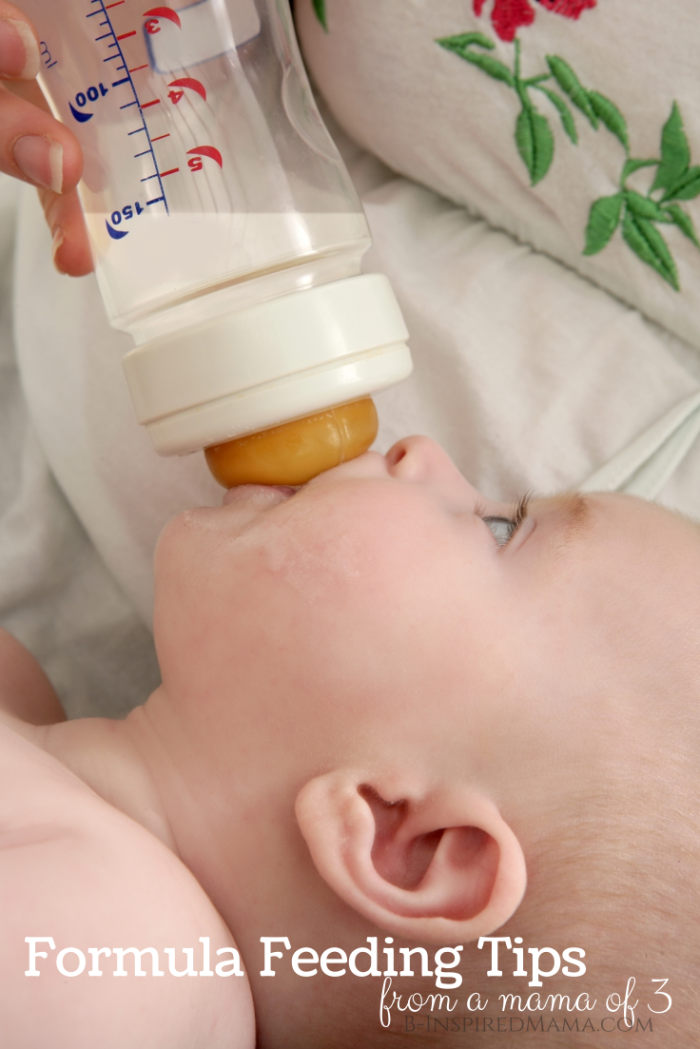 If parents persist and feed the child at regular intervals, the baby will rarely be calm, satisfied and satisfied with life. When a child desperately demands (simply cries loudly) that the parents meet his normal and healthy needs, the parents become nervous and do not know what to do. The confrontation between a parent who tries to fit a child's needs into an abstract schedule and a child who struggles to get everything they need to survive, grow, and develop exhausts both parents and children. In a senseless struggle, the emotional and physical state of the child suffers, the trusting relationship between the parent and the baby is undermined.
If parents persist and feed the child at regular intervals, the baby will rarely be calm, satisfied and satisfied with life. When a child desperately demands (simply cries loudly) that the parents meet his normal and healthy needs, the parents become nervous and do not know what to do. The confrontation between a parent who tries to fit a child's needs into an abstract schedule and a child who struggles to get everything they need to survive, grow, and develop exhausts both parents and children. In a senseless struggle, the emotional and physical state of the child suffers, the trusting relationship between the parent and the baby is undermined.
Parents of a baby who is always dissatisfied between feedings involuntarily begin to think that he is unbearable, “difficult” or even unhealthy, spoiled and spoiled. People around are sure that parents are slow and negligent, because they cannot cope with their child. In this situation, parents are no longer able to trust their own feelings, whether they react correctly to the child's behavior. The natural, instinctive reaction is to do everything possible to calm their beloved helpless child. Most often, one has only to take the child in his arms and give him the breast, as he calms down. But what kind of mother would risk taking the child in her arms once again if she was frightened that such “connivance” in upbringing would spoil the child for life?!
The natural, instinctive reaction is to do everything possible to calm their beloved helpless child. Most often, one has only to take the child in his arms and give him the breast, as he calms down. But what kind of mother would risk taking the child in her arms once again if she was frightened that such “connivance” in upbringing would spoil the child for life?!
A similar conflict between what most parents want and try to do for the peace and happiness of the baby, and what “authoritative” advisers are trying to convince them of, leads to a situation where parents do not believe in themselves and artificially suppress the natural reaction to restless baby behavior. The inner feeling of insecurity of parents leads to stiffness in communication with the child, and children immediately feel it. Parents not only do not trust their feelings, but also to some extent deny the child's ability to express their experiences and feelings. And since children learn the world through the prism of an adult, the baby may lose confidence in himself.
Be sensitive to baby's behavior – that's how it should be
When a mother understands a newborn's behavior and notices the suckling signals (see chart on page 129 [below]), she easily anticipates all of the baby's basic biological needs. For a mother who responds quickly and consistently to a change in her child's behavior, the baby does not need to cry to be noticed. As a result, the child trusts the world around and grows up healthy, calm and complacent. The calmer the baby, the more confident the parents, because they manage to live in peace and harmony with the child. When the baby does not cry, parents are pleased to be with him.
How can a mother learn to determine when to offer breasts and when to do something else? For simplicity, consider: if a child needs something, he needs a mother and a breast. Sometimes babies need breasts because they're hungry, sometimes because they're restless, and sometimes because they want to socialize. Breastfeeding satisfies all these needs of the child, so new parents do not need to try to determine what exactly the child needs at this moment. Over time, parents will learn to discern the nuances of a child's behavior. With experience comes an understanding of how a child behaves when hungry, bored, overexcited or tired; when to offer the breast and when to find another way to soothe the baby.
Over time, parents will learn to discern the nuances of a child's behavior. With experience comes an understanding of how a child behaves when hungry, bored, overexcited or tired; when to offer the breast and when to find another way to soothe the baby.
Observing your baby's behavior and recognizing signs of readiness to suckle pays off even with a grown baby. Parents who recognize that their child is an individual with unique, meaningful needs will continue to respect those needs well into the future. They will be able to understand the changing needs of the child and will be confident that they will be able to cope with each new age and stage of development of the child, they will enjoy a rich and multifaceted relationship with their baby.
Trusting your child and yourself is an important skill that is learned from the first minutes of parenthood. If a mother notices that a child wants to suckle and gives him a breast, she lays the foundation for dialogue, two-way communication with the child for the rest of her life. And the ability to listen occupies the most important place in communication.
And the ability to listen occupies the most important place in communication.
Signs of readiness to suckle in a newborn
- The child has a noticeable rapid movement of the eyes under the eyelids and trembling of the closed eyelids.
- The child's muscles tense, for example, he clenched his fists and flexed his arms at the elbows.
- The child rolls and turns and arches his back.
- The baby makes various sounds (very often these sounds are mistaken for “just talking”, although the baby definitely “reports” that he wants to suck).
- The child draws his hands to his mouth (even if his eyes are closed, he can suck his own hand).
- If the baby's hand is close to the face, the baby turns towards the hand, pokes, opens its mouth, or even tries to suck on the hand or any object that is near the mouth.
American editor's note: Crying is a late sign of readiness to suckle, which usually indicates that the parents failed to notice in time that it was time for the baby to breastfeed. When the baby has already burst into tears, it will be difficult to attach to the breast.
When the baby has already burst into tears, it will be difficult to attach to the breast.
Parents learn to identify signs of breastfeeding readiness in their baby through trial and error. Look at your child! No need to rely on general lists (including the one above).
More information
- Babies grow very fast. Breastfed babies typically double their weight by four to six months and triple by one year. No wonder your baby needs to breastfeed often!
- At birth, a baby's brain is 25 percent the size of an adult's brain. The human baby matures outside the womb, and its survival is completely dependent on the adults. If the baby is taken away from the mother (or from the one who cares for him), he instantly protests and thereby guarantees himself the necessary care and protection. Frequent cuddling satisfies the baby's need for close contact and helps the baby stay in a good mood.
- Feeding by the clock loses to latching in response to a baby's behavior that indicates that the baby wants to suckle.
 A child who is fed by the hour gains weight worse, does not receive the necessary amount of milk for growth and development, suffers from an increased level of bilirubin in the blood, and is more often supplemented with formula. Infrequent breastfeeding leads to engorgement of the mammary glands, increases the likelihood of cracked nipples, as well as the resumption of the menstrual cycle and ovulation, and therefore a faster onset of the next pregnancy.
A child who is fed by the hour gains weight worse, does not receive the necessary amount of milk for growth and development, suffers from an increased level of bilirubin in the blood, and is more often supplemented with formula. Infrequent breastfeeding leads to engorgement of the mammary glands, increases the likelihood of cracked nipples, as well as the resumption of the menstrual cycle and ovulation, and therefore a faster onset of the next pregnancy.
Bibliography
American Academy of Pediatrics Policy Statement on Breastfeeding and the Use of Human Milk (RE9729). Pediatrics 1997 Dec; 100(6):1035-1039.
Biancuzzo, M. Breastfeeding the Newborn, Clinical Strategies of Nurses. St. Louis, MO: Mosby, 2003.
Cregan, M. and Hartmann, E. Computerized breast measurement from conception to weaning: Clinical implications. J Hum Lact 1999; 15(2):89-96.
Daly, S.E. and Hartmann, P. Infant demand and milk supply. Part 1: Infant demand and milk production in lactating women. J Hum Lact 1995; 11(1):21-26.
J Hum Lact 1995; 11(1):21-26.
Daly, S.E. and Hartmann, P. Infant demand and milk supply. Part 2: The short-term control of milk synthesis in lactating women. J Hum Lact 1995; 11(1):27-37.
Mohrbacher, N. and Stock, J. The Breastfeeding Answer Book. Schaumburg, IL: La Leche League International, 2003.
La La Leche League International. Common Breastfeeding Myths. Schaumburg, IL: La Leche League International, l998.
Marasco, L. and Barger, J. Cue feeding: Wisdom and science. Breastfeeding Abstracts 1999; 18(4):27-28.
McKenna, J. Natural History of Breast Feeding: An Evolutionary and Developmental Perspective. SUNY@Stonybrook School of Nursing Breastfeeding Conference, May 11, 2001.
Woolridge, M. Baby controlled breastfeeding: Biocultural implications. In Breastfeeding: Biocultural Perspectives. New York: De Gruyter, 1995.
A gift to all Russian mothers is a translation of a memo on the signs of readiness to suckle from the latest edition of the legendary book “Women's Art. Breastfeeding" (2010).
Breastfeeding" (2010).
Readiness to suckle behavior
- At first, the baby makes a subtle sign that he wants to suckle. The eyes move quickly under the eyelids, the eyelids tremble before the child opens them. The kid brings his hands to his face, opens his mouth.
- Then there are more obvious signs - the baby is looking for the breast, whimpering and squeaking.
- If you notice this behavior at this stage, the baby will latch on gently and easily.
- As the baby grows hungry or upset, his whole body and mouth tense up. He starts breathing faster or crying.
- When the baby has already started crying, it is more difficult for him to take the breast. Crying - late a sign of hunger or that the child wants to suckle. Reassure your baby before breastfeeding.
- The baby is easy to breastfeed when he "asks" for the breast, and much more difficult when he "demands" it.
- Don't wait for milk to accumulate in your breasts.
 If the breast is full, milk production in it has already slowed down.
If the breast is full, milk production in it has already slowed down. - Even if the baby does not ask, you can let him suckle at the breast at any time convenient for you.
Rubric Breastfeeding
9 810798Other articles on this topic
- Child 2 and 4
- Child slowly growing
- The child stopped gaining weight
- The child bends the back
- The child's restless behavior
Actual posts
,0003Learn and participate
Baby.ru clubs are a treasure trove of useful information
Text - 30 steps to strong immunity! Happiness - when everyone is healthy! New technologies in education How to help a child with a choice of profession? Safe Internet for a child Bullying at school: how to protect a child? childFirst aid for ARVIHow not to spend autumn on sick leave?The first first aid kit for your babyGallery of your baby's spots
I have milk. The chest is swollen and sore.
 What to do? - Stimulants
What to do? - Stimulants My milk has arrived. The chest is swollen and sore. What to do?
. Before the arrival of milk, the child sucked "first milk" or colostrum. Colostrum contains all the necessary nutrients, as well as antibodies and other immune factors that protect the baby from disease. The process of changing colostrum into milk takes about two weeks.
When the milk comes in, the breast is so full that it seems that it is about to burst. The breasts become fuller not only due to the increase in the volume of milk, but also due to the influx of additional blood and fluid, which is needed to prepare the breast for feeding. The degree of breast engorgement depends on the woman: for some, the breasts enlarge quite a bit, and for some, they swell very much. As a rule, engorgement subsides within 12-48 hours from the time the milk arrives. During the arrival of milk, it is especially important to feed the baby more often. When the baby sucks milk, the breast makes room for excess fluid, which rushes to the breast in the postpartum period.
When the baby sucks milk, the breast makes room for excess fluid, which rushes to the breast in the postpartum period.
Measures to prevent or reduce breast swelling:
- Feed as early and as often as possible. Try to feed the first time as soon as possible after the baby is born. Breastfeed your baby at least ten times a day.
- Check that the baby is well attached to the breast and that he is well latched onto the breast. (See How to Attach Your Baby to the Breast?) Feed any time baby shows signs of sucking readiness - rapid eye movement, trembling of closed eyes, muscle tension, clenched fists, body flexion, vocalizations, hand sucking, or hand grabbing mouth, search reflex (touching the cheek with something causes the head to turn towards the touched object). Wake your baby up for feedings if he sleeps more than two or three hours in a row during the day or more than four hours at night.
- Let the baby suckle one breast for as long as he suckles.
 Usually the baby either falls asleep or releases the breast on its own when it is full. Do not limit suckling time to one breast to a certain number of minutes.
Usually the baby either falls asleep or releases the breast on its own when it is full. Do not limit suckling time to one breast to a certain number of minutes.
- If the baby is not suckling or suckling poorly, express milk with your hands or with a breast pump as often as if the baby was breastfeeding.
- No need to limit yourself to drinking. Studies show that fluid restriction is not effective in reducing breast swelling due to milk supply.
Frequent breastfeeding helps most women relieve breast soreness after milk comes in. However, in a small number of women, the breasts still swell despite frequent feedings. If frequent breastfeeding doesn't work for you, try
Gentle Breast Massage
Place your palm on the very top of your chest, just below your collarbone. Gently stroking the breast in a circular motion, move your palm to the nipple. It is convenient to do such a massage in the shower, over a sink or a basin of warm water, periodically washing the chest.
Warm compresses, massages, cold compresses
Another way to reduce engorgement is to apply warm moist compresses and express milk right before feeding. Do not apply a warm compress to the chest for too long, because. this can lead to increased swelling and inflammation. Cold compresses can be applied between feedings to reduce pain and engorgement. Cold compresses cause the blood vessels to constrict, thereby reducing breast swelling. Despite popular belief, cold does not cause chest colds or mastitis. To make a cold compress, take a plastic bag, put ice in it, tie the bag so that the melting water does not leak out of the bag, wrap the bag with a handkerchief or linen kitchen towel and apply it to your chest.
Cabbage compresses
A common folk remedy for sore swollen breasts is cabbage leaf compresses. For compresses, you can use both leaves at room temperature and chilled in the refrigerator. To prepare a cabbage poultice, wash the inner leaves of the head of cabbage, cut off the hard veins and mash them slightly, for example by rolling over the leaves with a rolling pin (or a water bottle) several times. Wrap the chest with cabbage leaves. You can wear a bra on top. Change the leaves every two hours or when they are withered. If you develop a rash or an allergic reaction, stop making cabbage compresses. Do not get carried away with this method, as sometimes overuse of cabbage leaves can lead to a decrease in milk supply. Experts recommend stopping making cabbage compresses as soon as the swelling subsides.
Wrap the chest with cabbage leaves. You can wear a bra on top. Change the leaves every two hours or when they are withered. If you develop a rash or an allergic reaction, stop making cabbage compresses. Do not get carried away with this method, as sometimes overuse of cabbage leaves can lead to a decrease in milk supply. Experts recommend stopping making cabbage compresses as soon as the swelling subsides.
If you experience any of the following symptoms, seek immediate medical attention:
- Breast engorgement persists despite all the above measures.
- You have symptoms of mastitis, such as fever above 38°C (100.6°F), red/sore/swollen breasts or both breasts, chills, flu-like condition.
- The baby cannot latch onto the breast.
- Baby has few wet and dirty diapers (see article Is baby getting enough milk?)
- Breast engorgement results in flattening of the nipples and hardening and swelling of the areola.
 In turn, it is difficult for the child to grab the breast. In this case, a new method called Reverse Pressure Softening may come in handy. Pressure softening of the areola, as the name implies, softens the areola so that it is easier for the baby to latch onto the breast and suck out milk. During pressure on the areola, milk may or may not flow out.
In turn, it is difficult for the child to grab the breast. In this case, a new method called Reverse Pressure Softening may come in handy. Pressure softening of the areola, as the name implies, softens the areola so that it is easier for the baby to latch onto the breast and suck out milk. During pressure on the areola, milk may or may not flow out.
P areola pressure softening Jin Cotterman RNC , IBCLC ( [Email Protected] )
What is "softening of Arela REMODICS"?
Areola Pressure Softening (RAF) is a new way to soften the areola (areola) to make it easier for a newborn baby to latch on and suck out milk, especially during the postpartum period when both mother and baby are getting used to breastfeeding. Breastfeeding doesn't have to be painful. If the areola is soft and plastic, the child can painlessly for the mother draw the nipple deep into the mouth so that it is possible to press the milk ducts under the areola with the tongue and gums. (Sucking on breasts is different from sucking on artificial nipples.)
(Sucking on breasts is different from sucking on artificial nipples.)
The new way is different from expressing milk by hand. During pressure on the areola, milk may or may not flow.
When can RAD be used?
The Areola Pressure Softening Technique is well suited for the first days after childbirth when the areola is hard, your breasts are swollen or it hurts to feed. By itself, the arrival of milk is not always the only cause of breast engorgement. If you skip or delay feedings, the tissues around the milk ducts retain excess fluid like a sponge, but the baby never sucks out this fluid. The administration of intravenous fluids or the use of medications such as artificial oxytocin (Pitocin) can cause more fluid to accumulate. It can take seven to fourteen days for the body to get rid of excess fluid. If you use a breast pump, try not to pump too long in one sitting, and don't set your pump on a deep vacuum cycle. Long pumping and strong stretching of the areola with a breast pump can lead to increased swelling.
Feel the areola and tissue underneath well. How do they feel - soft and plastic like an earlobe or lips? Or hard and inflexible like a chin? If the areola is hard and you can't put pressure on it, it's time to apply the pressure softening method. The areola softening technique should be done before each feeding. The duration of the application of the RAD technique depends on several factors: whether the swelling of the areola subsided; Do you hear that the baby regularly swallows during sucking; Does it hurt when you put your baby to the breast without softening the areola before feeding? Establishing painless feeding, when the breast has ceased to swell and the child sucks effectively, takes a week, sometimes takes a week or longer.
Mechanism of action RAD
Pressure softening of the areola temporarily shifts the swelling back and up into the chest. This makes it possible to change the shape of the areola, and also helps to pull the nipple outward. Pressing on the areola sends a special signal from the back of the breast to move the milk to the front of the breast (this is called a flush or milk ejection reflex), and the baby, in turn, can already suck milk with the tongue when the milk has rushed to the front of the breast. RAD in combination with a light massage of the upper breast towards the nipple helps to express milk by hand or slowly and gently with a breast pump.
Pressing on the areola sends a special signal from the back of the breast to move the milk to the front of the breast (this is called a flush or milk ejection reflex), and the baby, in turn, can already suck milk with the tongue when the milk has rushed to the front of the breast. RAD in combination with a light massage of the upper breast towards the nipple helps to express milk by hand or slowly and gently with a breast pump.
Where to press ?
The most important thing is to soften the circle with a diameter of 2.5 cm or more around the base of the nipple. It will be easier for the baby to suck if you also soften the breast in the place where the baby's chin rests. Softening the areola with pressure should not cause pain or discomfort.
Method of application of the areola pressure softening technique0013  e. very hard to the touch, lie on your back and/or have someone press the areola over your fingers.
e. very hard to the touch, lie on your back and/or have someone press the areola over your fingers.



